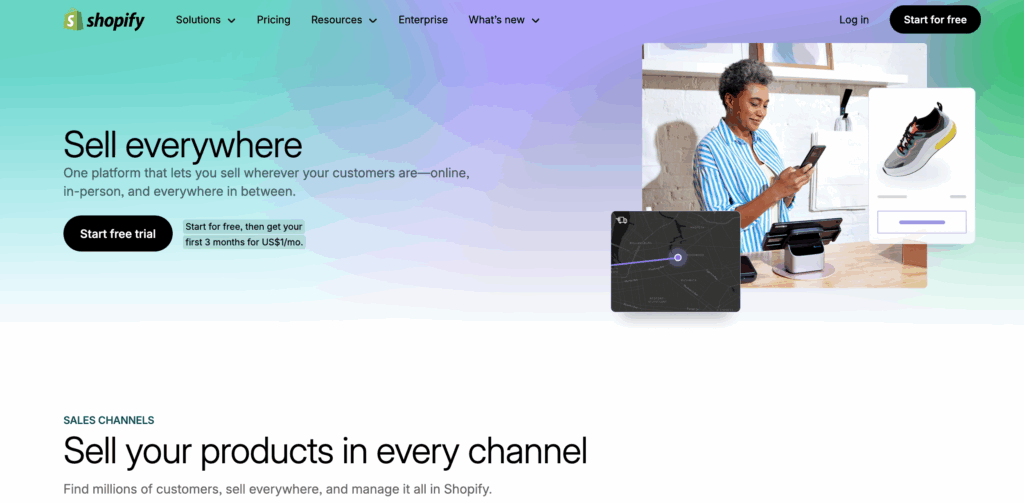
Finding customers for your clothing brand requires a strategic blend of digital marketing, community building, and relentless value creation. The most effective approach is to identify your ideal customer avatar and meet them where they already spend time online, using a mix of organic content and targeted advertising to convert them into loyal fans.
Unlike simply setting up a store on Shopify or BigCommerce, customer acquisition is an ongoing process of engagement. Success hinges on understanding that platforms like Instagram and TikTok are your new storefronts. Your goal is not just to sell a product, but to sell an identity and a lifestyle that resonates with a specific audience, driving them to your ecommerce platform of choice.
A Strategic Framework for Customer Acquisition
Building a customer base doesn’t happen by accident. It requires a planned effort across multiple channels, constantly testing and refining your message to see what connects best with your target demographic.
Define Your Target Audience: You cannot market to everyone. Create a detailed profile of your ideal customer: age, interests, income, which social platforms they use, and which other brands they love. Every marketing decision should be filtered through this avatar.
Leverage Social Media Authentically: Choose 1-2 platforms where your audience lives (e.g., Instagram Reels, TikTok, Pinterest) and focus on creating valuable content, not just promotional posts. Show behind-the-scenes, educate on fabric choices, style outfits, and showcase customer photos to build community and trust.
Implement Search Engine Optimization (SEO): For platforms like Shopify, BigCommerce, or WooCommerce that offer strong SEO tools, optimize your product pages and blog content for keywords your customers are searching for (e.g., “sustainable yoga wear,” “men’s casual linen shirts”). This builds a steady, free stream of traffic over time.
Explore Strategic Paid Advertising: Start with a small budget on platforms like Facebook/Instagram or Google Ads. Use highly targeted ads based on the customer avatar you defined. The key is to test different audiences and creatives to find a profitable return on ad spend (ROAS).
Build an Email List from Day One: Your website, whether on Wix, Squarespace, or Shopify, must capture emails via a pop-up or landing page offering a discount or exclusive content. Email marketing provides a direct, owned channel to nurture leads and drive sales long after they leave your site.
Collaborate with Micro-Influencers: Partner with influencers who have a highly engaged audience that matches your brand. Their authentic endorsements are more valuable than a celebrity with millions of disengaged followers and can drive targeted traffic to your store.
FAQs
What is the best social media platform to promote a clothing brand?
The “best” platform is where your target audience spends time. Visually-focused platforms like Instagram and TikTok are generally top choices for fashion. Instagram is great for aesthetics and storytelling, while TikTok is ideal for viral trends, authenticity, and behind-the-scenes content.
How can I use SEO to get customers for my clothing website?
Optimize your product titles and descriptions with specific keywords (e.g., “organic cotton graphic tee,” “midi dress with pockets”). Start a blog on your Shopify or BigCommerce site around style tips, fashion trends, or fabric guides to attract people searching for that information, then introduce them to your products.
Is it better to focus on organic marketing or paid ads for a new brand?
A healthy mix of both is ideal. Organic marketing (social content, SEO) builds brand authenticity and provides free long-term growth but is slower. Paid ads (social media, Google) can generate traffic and sales quickly, helping you test and validate audiences, but require a budget. Use organic to build trust and paid to accelerate reach.
How do I get the first 100 customers for my clothing line?
Leverage your personal network honestly. Encourage friends and family to share your launch. Offer a compelling launch discount. Proactively reach out to micro-influencers for collaborations in exchange for product. Engage authentically in online communities and forums where your potential customers already gather.
What’s the difference between marketing on Shopify versus a marketplace like Etsy?
Marketing on your own Shopify store means you own the customer data and are building your own brand equity, but you must drive all traffic yourself. Marketplaces like Etsy have built-in traffic searching for products, but you compete directly with others and don‘t own the customer relationship. The most successful brands often use both.
Final Thoughts
Finding customers is an iterative process of learning what resonates. There is no single magic bullet; it’s the consistent execution of multiple strategies that builds momentum. Track your efforts to see which channels bring the highest quality traffic and sales to your store, whether it‘s hosted on Shopify, Volusion, or another platform. Be patient, provide immense value, and focus on building a community, not just a customer list. Your clothing brand’s success depends on the authentic connections you forge.
